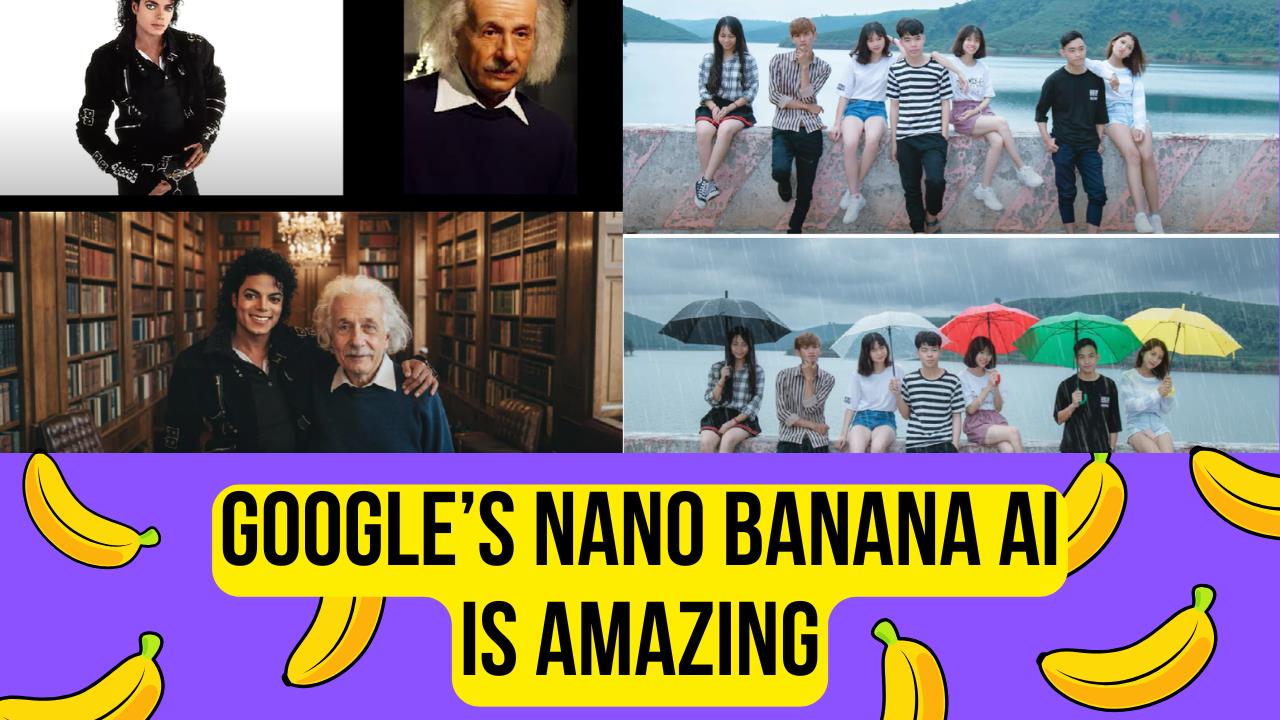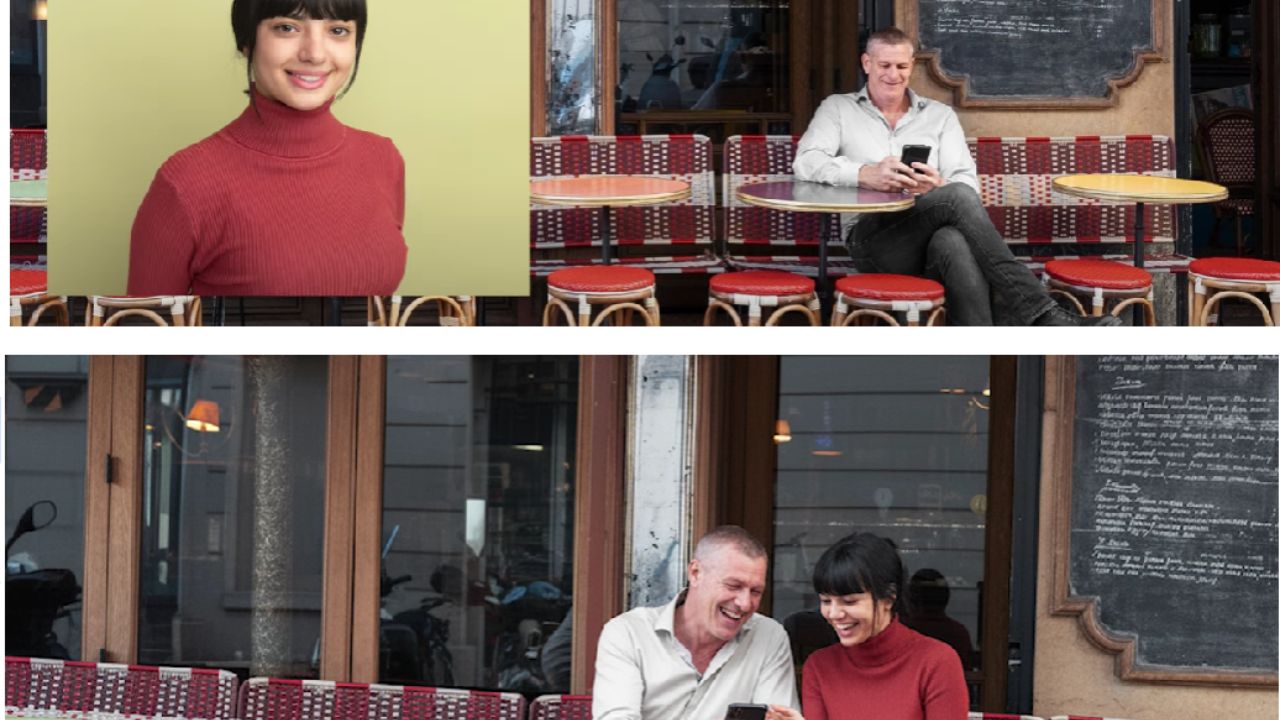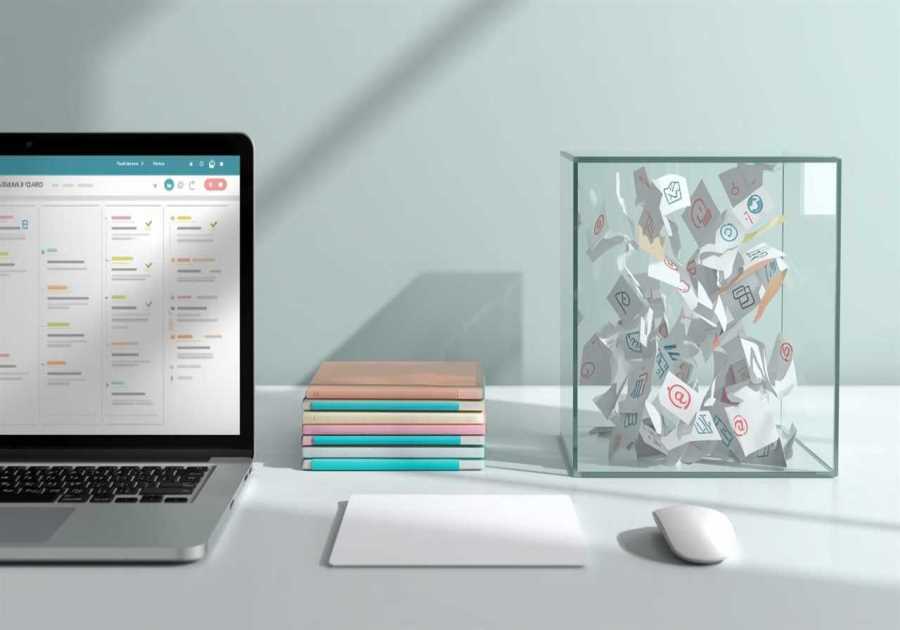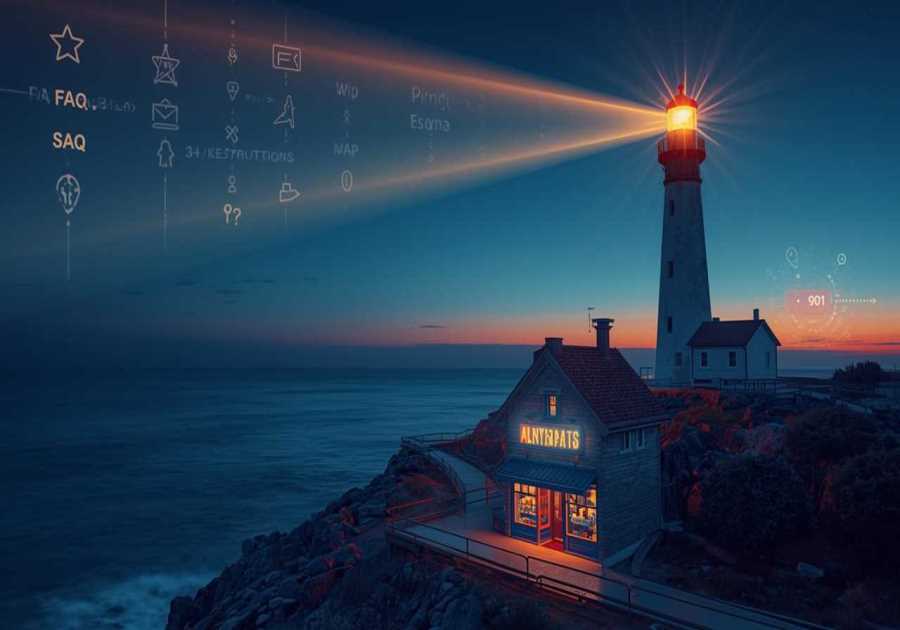
Imagine a man sitting alone in a café. He looks lonely. Now imagine a woman walking over to join him, laughing as they share a phone screen together. Simple? With traditional editing tools, no. With Google’s brand-new Nano Banana AI, yes—one click simple.
Picture that same man standing by a gleaming yellow sports car. Think of two legends from different eras—Michael Jackson and Albert Einstein—posing like lifelong friends. Or perhaps an overcast street where dozens of umbrellas bloom in the rain. For years, these ideas belonged to Hollywood studios or high-end design teams. Today, they belong to anyone with a keyboard.
Nano Banana is Google’s latest AI-driven contextual image editor. Forget filters, forget cut-and-paste hacks. This tool doesn’t just alter images—it understands them. It modifies while preserving essence. It blends without breaking context. In a single prompt, you can add, subtract, replace, or dramatize any element of a scene.
And here’s the kicker: all of this can be done for free.

🌐 What is Nano Banana AI?
Don’t let the playful name fool you. Nano Banana isn’t a toy; it’s a weapon. A deep contextual image editor, it’s Google’s answer to Flux Context and OpenAI’s visual generators. Where others stumble with consistency, Nano Banana shines.
Upload an image. Write a prompt. Watch as it bends reality without breaking it. A woman holding a perfume bottle? A leather couch inside a cigar lounge? A couple’s dinner turned into cinematic shots from multiple angles? Done, done, and done.
Google first teased contextual editing in March 2025 with Gemini 2 Flash. The results were… underwhelming. A week later, OpenAI’s ChatGPT-40 image generator raised the bar. Then Flux Context stole the spotlight. But Nano Banana? It wants the crown.
🚪 How to Access Nano Banana
First, the warning: don’t trust imposters. Several websites are already claiming Nano Banana access, charging money, and quietly routing requests through weaker models.
The only legitimate way to access it now is via lmarina.ai. No account needed. No subscription. Just select Battle Mode, upload your images, and type your prompt.
Results are generated in a duel—two models side by side. Your job is to vote which looks better. When you’re lucky (and luck comes often), one of those results will be labeled Nano Banana.
Pro tip: open multiple browser tabs to increase your chances.
🎨 Why Nano Banana Feels Different
Let’s run through real-world examples:
Companionship in a café. One lonely man. One smiling woman. Within seconds, Nano Banana created a frame where both sit naturally, laughing together. Consistency intact.
Historical mashups. A prompt for Michael Jackson and Albert Einstein? The results looked like a surreal but believable photoshoot. Flux Context’s version? Stiff, awkward, and pixelated.
Weather control. Add rain. Add umbrellas. Nano Banana delivered a moody masterpiece. Flux gave umbrellas… floating in thin air.
Room transformation. Upload a plain room. Upload a Buddhist-themed room. Ask Nano Banana to decorate. It matched style and essence nearly flawlessly. Flux simply invented a new room.
Cinematic compositions. One dinner scene turned into multiple camera angles: close-ups, overheads, wide shots. Nano Banana kept every element consistent—glasses, lighting, faces. Competitors broke reality with warped angles.
Product ads. A woman holding a perfume bottle. A coffee machine pouring espresso. A bicycle in cinematic lighting. Each looked like polished ad photography. Nano Banana preserved labels, textures, and branding—something few AI tools manage.
Portrait retouching. Smooth skin? Nano Banana pulls it off without creating a new face. Every competitor failed this simple but crucial test.
Clothing swaps. Complex shirt patterns, swapped with precision. The same pose, the same man, the same energy. Competitors warped the figure or erased details.
Colorization. Black-and-white photos came alive naturally. Where Flux added a “cinematic” filter, Nano Banana simply restored color as requested.
🎥 Beyond Photography – Nano Banana for Video
Here’s where it gets revolutionary. Imagine you film a single shot in a restaurant. Normally, turning that into a dynamic video requires multiple cameras, lighting rigs, and maybe even a crane.
Nano Banana skips the crew. It lets you request new camera angles from one static image:
Medium close-up of the man.
Overhead shot of the couple.
Wide establishing shot.
Each frame remains faithful. Each character consistent. For content creators and indie filmmakers, this is lightning in a bottle.
🏆 Nano Banana vs. The Competition
Flux Context: Creative, but struggles with precision. Consistency issues, floating objects, warped text.
Gemini 2 Flash: Google’s earlier attempt—low-quality, quickly outdated.
ChatGPT Visual Models: Powerful, but Nano Banana edges ahead in contextual accuracy.
Nano Banana isn’t just a tool. It’s a shift in standards. From product ads to portraits, from cinematic storytelling to historical mashups, it raises the bar on what AI editing should deliver.
🔮 The Future of Nano Banana
Rumors suggest that Nano Banana won’t keep this quirky name. When Google formally launches it, expect integration into:
Pixel phones – contextual editing at your fingertips.
Gemini app – seamless synergy with text and image generation.
Google Flow – potentially paired with V3 for dynamic storytelling.
Will it stay free? Maybe not. But right now, early adopters are glimpsing a future where imagination flows unbroken into images.
✨ Final Thoughts
Nano Banana is not here to play. It’s here to redefine visual editing.
This man looks lonely in a café. This woman joins him. Now they laugh together. One click.
A car. A storm. A perfume bottle. A sports legend shaking hands with a physicist. One click.
Consistency matters. Context matters. Creativity matters. Nano Banana delivers them all.
When the robots take over, they may look a lot like this.
If you found these AI updates exciting, share them with friends who want to stay ahead in the world of digital creativity. From AI-generated images that push artistic boundaries to videos that blend storytelling with automation, and music powered by machine learning, the future of content is evolving fast. Stay tuned for upcoming posts covering the latest breakthroughs in AI tools, trends, and creative opportunities. In the meantime, explore our other articles to deepen your understanding of how AI is transforming media. You may want to check this one: How to Make a Full-Length AI Music Video: No Skills, No Budget, Just Tools & Vision






